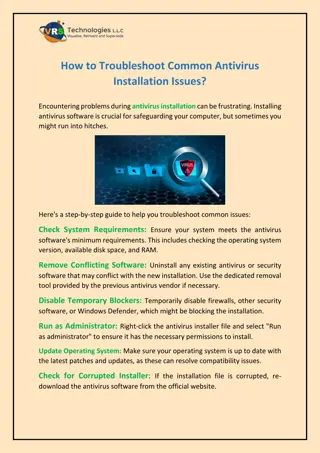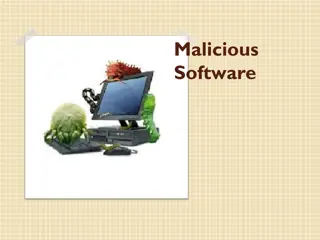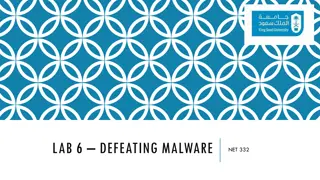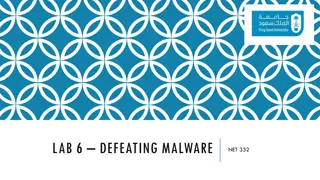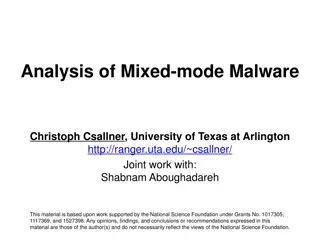
How Does Antivirus Software Detect and Remove Malware?
In this PDF, We learn how antivirus software detects and removes malware through signature-based detection, heuristic analysis, behavioural monitoring, and sandboxing. VRS Technologies LLC offers the most strategic services of Antivirus installation Dubai. For More info Contact us: 056-7029840.
Download Presentation

Please find below an Image/Link to download the presentation.
The content on the website is provided AS IS for your information and personal use only. It may not be sold, licensed, or shared on other websites without obtaining consent from the author. If you encounter any issues during the download, it is possible that the publisher has removed the file from their server.
You are allowed to download the files provided on this website for personal or commercial use, subject to the condition that they are used lawfully. All files are the property of their respective owners.
The content on the website is provided AS IS for your information and personal use only. It may not be sold, licensed, or shared on other websites without obtaining consent from the author.
E N D
Presentation Transcript
How Does Antivirus Software Detect and Remove Malware? Antivirus software detects and removes malware through a combination of several key techniques: 1. Signature-Based Detection Antivirus installation maintain a database of known malware signatures, which are unique strings of data or patterns found in malware code. When a file is scanned, the antivirus software compares its contents to the signatures in the database. If a match is found, the file is flagged as malicious. 2. Heuristic Analysis This technique involves analysing the behaviour and characteristics of files to identify potential threats. Heuristic analysis can detect new or modified malware by looking for suspicious activities or code patterns that are commonly associated with malware, even if the specific malware is not in the database. 3. Behavioural Monitoring Antivirus software monitors the behaviour of programs and processes in real- time. If a program exhibits suspicious behaviour, such as attempting to access restricted areas of the system, modify critical files, or communicate with known malicious servers, the antivirus may block the action and flag the program as malware.
4. Sandboxing Some antivirus programs use sandboxing to execute suspicious files in a virtual environment. This isolated environment allows the antivirus to observe the file s behaviour without risking harm to the actual system. If the file behaves maliciously, it is flagged and quarantined. 5. Machine Learning and AI Advanced antivirus solutions employ machine learning and artificial intelligence to improve their detection capabilities. These technologies can analyse vast amounts of data and identify patterns or anomalies that may indicate malware, even if the specific threat has never been seen before. 6. Cloud-Based Detection Many modern antivirus programs use cloud-based detection to quickly identify and respond to new threats. When a suspicious file is encountered, it can be uploaded to the cloud, where it is analysed against a broader database of threats. This allows for faster updates and more accurate detection. Removal Process Once malware is detected, the antivirus software can take several actions to remove it: Quarantine: The infected file is moved to a secure location where it cannot harm the system. This allows the user to review and decide whether to delete or restore the file. Deletion: The malicious file is permanently removed from the system. Disinfection: The antivirus attempts to remove the malicious code from the infected file, restoring it to a clean state. Regular updates to the antivirus software are essential to ensure it can recognize and protect against the latest threats. By combining these techniques, antivirus software provides robust protection against a wide range of malware, helping to keep your devices secure. VRS Technologies LLC offers the most standard services of Antivirus Installation Dubai. For detailed information contact us: +971-56-7029840 visit us: www.vrstech.com


